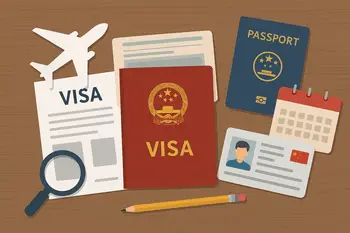
China’s permanent residency system has become increasingly strategic, targeting highly skilled professionals who can contribute to the nation’s economic development.
Understanding the specific requirements, pathways, and challenges is crucial for foreign workers seeking long-term stability in China’s dynamic market.
Current Permanent Residency Framework
China operates a tiered permanent residency system with specific categories designed for different types of foreign talent.
The system requires applicants to hold senior positions in key industries or institutions, have received national-level awards or recognition, or possess expertise in fields deemed critical to China’s development.
Key Categories for Highly Skilled Workers
| Category | Primary Requirements | Target Professionals |
|---|---|---|
| Class A (Top Talent) | National-level recognition, senior executive positions | Nobel laureates, Fortune 500 executives, renowned scientists |
| Class B (Professional Talent) | Industry expertise, significant contributions | Senior managers, technical experts, researchers |
| Investment-Based | Direct investment of at least USD $500,000 in China | Entrepreneurs, business owners |
| Family-Based | Marriage to Chinese citizen for 5+ years | Spouses of Chinese nationals |
Specific Financial Requirements (2025)
The financial thresholds have been updated for 2025:
| Requirement Type | Amount (2025) | Regional Variations |
|---|---|---|
| Minimum Annual Salary | CNY 886,104 per year | Higher in tier-1 cities |
| Investment (General) | USD $500,000+ | Lower in western regions |
| Investment (Western Regions) | USD $500,000 minimum for poverty alleviation areas | Targeted development zones |
Source: S.J. Grand Immigration Services
Documentation Requirements Checklist
Core Documents
- Valid passport with minimum 6 months validity
- Current residence permit
- Employment contract or business registration
- Tax payment certificates for past 3 years
- Criminal background check (home country + China)
- Health examination report
Professional Achievement Evidence
- Educational credentials (notarized and apostilled)
- Professional certifications and licenses
- Awards and recognition letters
- Published research or patents
- Letters of recommendation from industry leaders
- Media coverage or professional profiles
Financial Documentation
- Bank statements (12 months)
- Salary certificates
- Investment proof and ownership documents
- Tax returns and compliance certificates
Application Process Timeline
| Stage | Duration | Key Activities |
|---|---|---|
| Document Preparation | 2-4 months | Gathering, translation, notarization |
| Initial Submission | 1-2 weeks | Application lodging, fee payment |
| Review Process | 6-12 months | Government evaluation, background checks |
| Interview (if required) | 1-2 months | Language assessment, cultural integration |
| Final Decision | 2-4 weeks | Approval notification, card issuance |
| Card Collection | 1 week | Biometric data, final processing |
Total Timeline: 12-18 months average
Common Challenges and Solutions
Challenge 1: Documentation Complexity
Problem: Multiple government departments require different document formats and translations.
Solution:
- Work with certified translation services
- Maintain document tracking spreadsheet
- Allow 25% extra time for re-submissions
Challenge 2: Policy Changes
Problem: Immigration regulations update frequently without advance notice.
Solution:
- Subscribe to official immigration updates
- Engage with professional immigration lawyers
- Join expat professional networks for real-time information
Challenge 3: Regional Variations
Problem: Different provinces have varying implementation standards.
Solution:
- Research local requirements thoroughly
- Connect with regional immigration consultants
- Consider relocating to more favorable jurisdictions
Success Strategies for 2025
1. Professional Preparation
- Start documentation 12+ months before intended application
- Obtain certified translations from Ministry-approved agencies
- Develop relationships with Chinese professional references
2. Strategic Positioning
- Target roles in China’s priority industries (technology, green energy, biomedicine)
- Pursue advanced degrees from Chinese universities
- Contribute to China-focused research or business development
3. Cultural Integration
- Achieve HSK Level 4+ Chinese proficiency
- Participate in community or professional associations
- Demonstrate long-term commitment to China residency
Regional Programs and Alternatives
Several cities offer accelerated pathways:
- Shanghai: Talent visa programs for tech professionals
- Shenzhen: Innovation and entrepreneurship incentives
- Beijing: Academic and research-focused programs
- Guangzhou: A-card and B-card system with differentiated benefits
Source: China Briefing – Guangzhou Talent Cards
Cost Analysis
| Expense Category | Estimated Cost (USD) |
|---|---|
| Government fees | $300-500 |
| Legal consultation | $2,000-5,000 |
| Document preparation | $1,000-2,000 |
| Translation services | $500-1,500 |
| Medical examinations | $200-400 |
| Total Estimated Cost | $4,000-9,400 |
Professional Resources
Government Sources
- National Immigration Administration
- Ministry of Human Resources and Social Security
- Local Public Security Bureau Exit-Entry Administration
Professional Services
- Immigration law firms specializing in China
- Certified public accountants for tax compliance
- Professional translation services (Ministry-approved)
Industry Networks
- American Chamber of Commerce in China
- European Chamber of Commerce
- Local professional associations by industry
Next Steps
- Assess Eligibility: Compare your qualifications against current requirements
- Document Audit: Begin collecting and organizing required paperwork
- Professional Consultation: Engage with qualified immigration attorneys
- Timeline Planning: Create realistic 18-month preparation schedule
- Backup Planning: Consider alternative visa options during processing
China’s permanent residency system continues evolving to attract global talent while maintaining selective standards.
Success requires thorough preparation, professional guidance, and strategic positioning within China’s priority development areas.
For the most current requirements and policy updates, consult with qualified immigration professionals and monitor official government announcements regularly.


